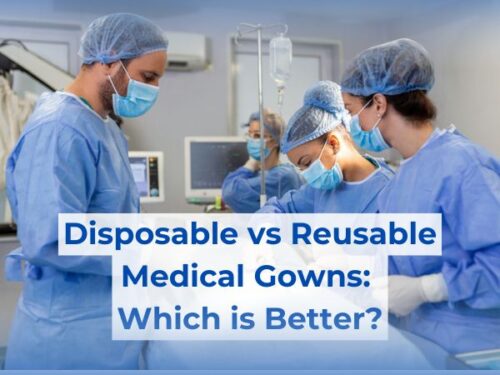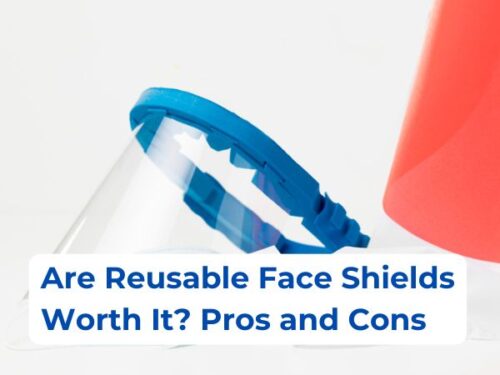An intra-aortic balloon pump, abbreviated as IABP, is a mechanical circulatory support (MCS) device which assists the heart in pumping out blood while decreasing myocardial oxygen demand. Patients with certain heart conditions may experience reduced afterload which means that the heart is unable to push the blood out towards the body with full force. This is due to the damaged or clogged arteries near the heart which results in decreased cardiac output thus consequently lowering the blood supply to vital organs.
When to use a cardiac balloon pump?
This is a common occurrence in patients with:
- Angina pectoris
- Myocardial infarction (commonly known as a heart attack)
- Cardiac arrhythmias (abnormality in normal cardiac beating rhythm)
- Heart failure
- Cardiac defects
- Cardiogenic shock
- Low cardiac output after a cardiac surgical procedure
- Coronary artery disease
- Acute congestive heart failure
- Myocarditis (swelling of the heart muscles)
An intra-aortic balloon pump is a medical device used to keep these wounded arteries wide open and allow consistent blood and oxygen flow to the heart.

An intra-aortic balloon pump (IABP) placed into the aorta: inflated during diastole (left), deflated during systole (right)
An IABP has a double-lumen catheter with an inflatable intra-aortic balloon made up of polyethylene at one end. The second end pumps the helium into the catheter which helps the balloon to inflate.

An Intra-aortic balloon pump
How does a balloon pump reduce afterload?
During cardiac diastole, the relaxing period of the cardiac cycle, the intra-aortic balloon pump inflates and pushes the blood from the thoracic aorta towards the coronary artery resulting in both increased diastolic pressure and reduced volume of blood in the thoracic aorta. However, while the heart muscles contract during cardiac systole, the balloon deflates thus generating dead space within the aorta. This creates a suction mechanism that pulls the blood out of the left ventricular and enables its supply to the coronary artery as well as to the body thus enhancing cardiac output. This also reduces the afterload along with myocardial oxygen consumption.
How does IABP reduce preload?
Preload, by definition, is the extent of stretching of heart cells called cardiomyocytes present within the walls of the left ventricle. The stretching of these cells results in a ventricular contraction forcing the blood in the ventricles to leave the chamber and rush towards the aorta to start a systemic circulation. Thus, the preload has a direct relation with the cardiac output i.e. the stronger the ventricular wall contraction, the more is blood volume ejected out of it.

Cardiomyocytes or heart cells
In the case of myocardial infarction, many of the ventricular cells are dead making it impossible for them to empty the chamber. This causes an unnecessary buildup of blood volume within the left ventricular paving the way toward cardiogenic shock or cardiac arrest, a fatal condition. Employing an intra-aortic balloon pump in this case can be a problem solver up to some extent as it creates a suction for the ventricular blood by deflating during systole. This powerful suction pushes the blood out of the ventricles even when its tissues are unable to pump by themselves thus providing at least three advantages simultaneously.

A cardiac artery showing (a) plaque and (b) being assisted with an IABP, (c) visible reduction in the affected area and increased lumen can be observed
One, the ventricular blood is cleared out. Second, the cleared-out blood is directed toward the coronary artery which helps provide oxygen-rich blood to the heart and reduces the chances of any further cardiac damage. Thirdly, the preload is reduced as there remains no need for the ventricular muscles to push the blood harder and harder when they are getting an assist from an IABP. Thus, the use of an aortic balloon pump, in this case, can prevent the worsening of the patient’s condition any further.
Does a balloon pump lower blood pressure?
A comparison of systolic pressure measured with and without using IABP clearly indicates that the prior one is lower. Various researchers have reported that a 10% reduction in systolic pressure is evident with the use of IABP. The reason behind a reduction in blood pressure is the complete removal or significant reduction in the fat deposits called plaques within the cardiac arteries. These plaques are responsible for narrowing the blood vessels and causing the shrinkage of the lumen for blood flow which results in increased blood pressure. A cardiac balloon pump, when inserted, inflates and pushes the plaques back toward the walls of the arteries which not only widens the lumen but also reduces the blood pressure. In this way, blood flow from the heart towards to coronary artery as well as the body is assisted i.e. an increased cardiac output. This also affects the cardiac oxygen demand by reducing it.
Thus, the hemodynamic effect of using an intra-aortic balloon pump can be summarized as follows:
| Aorta |
|
| Left ventricle |
|
| Heart |
|
| Blood flow |
|
Where is IABP inserted?
A catheter intra-aortic balloon pump consists of a flexible catheter to which the balloon is attached to one end. This balloon is known as an intra-aortic balloon. The other end of the catheter is attached to a computer console which helps in inflating and deflating this balloon at the proper time with your heartbeats.
The human heart contains a large artery called the aorta which carries blood from your heart to the rest of the body. The intra-aortic balloon is inserted into the aorta. Mostly, it is inserted through a small cut into the inside of your upper legs. The medical professionals insert this balloon pump catheter via the arteries of the legs and from there they can guide it to the aorta.

Pathway of an intra-aortic balloon pump inserted into the body
Once the balloon pump catheter reaches the aorta, it starts its work. This device continuously inflates and deflates until this procedure is completed and the device is removed. When the heart relaxes between beats, the balloon inflates and directs the blood flow toward the coronary arteries which may not be receiving enough blood flow without the pump. In contrast to this, the balloon deflates when the heart contracts resulting in more blood flow from the heart to the body using less energy. In this way, a cardiac balloon pump can help your heart to relax and contract when it cannot do so on its own.

An IABP visible near the aorta
Although IABP is extremely helpful in several heart problems including unstable angina, heart attack, heart failure, heart defects, and abnormal heart rhythms, it is a short-term treatment with a time period ranging from a few days up to a month. It is used only for a time until the patient receives permanent treatment or until the patient’s heart condition improves.
How do you wean off a balloon pump?
An intra-aortic balloon pump or an IABP is a short-term method used in several heart diseases. It is extremely significant as it helps in providing proper blood flow throughout the body and can be lifesaving. An intra-aortic balloon pump is usually placed for only a few days but it can be placed for 30 days or even more according to the severity of the problem.
The procedure of removal of the intra-aortic balloon pump requires ensuring that the patient does not take the anticoagulant drug. The surgeons must confirm that the activated clotting time (ACT) is less than 180 seconds. The patient is kept conscious during the procedure but it is made painless with the help of narcotic or analgesic agents.
The sutures are removed and the device console is turned off. After this, the balloon is deflated by aspiration with the help of a 20 ml syringe. In order to remove blood clots that may have developed during the procedure, the surgeons let the area (the artery into which the catheter is inserted) bleed. Then, the pulse rate of the patient is monitored to make sure that it is stable. In order to avoid any vascular complications or bleeding, the patient will need to lie down on their back for a few hours (normally 6 hours) after the complete removal of the components of the device.

PhD Scholar (Pharmaceutics), MPhil (Pharmaceutics), Pharm D, B. Sc.
Uzma Zafar is a dedicated and highly motivated pharmaceutical professional currently pursuing her PhD in Pharmaceutics at the Punjab University College of Pharmacy, University of the Punjab. With a comprehensive academic and research background, Uzma has consistently excelled in her studies, securing first division throughout her educational journey.
Uzma’s passion for the pharmaceutical field is evident from her active engagement during her Doctor of Pharmacy (Pharm.D) program, where she not only mastered industrial techniques and clinical case studies but also delved into marketing strategies and management skills.

















